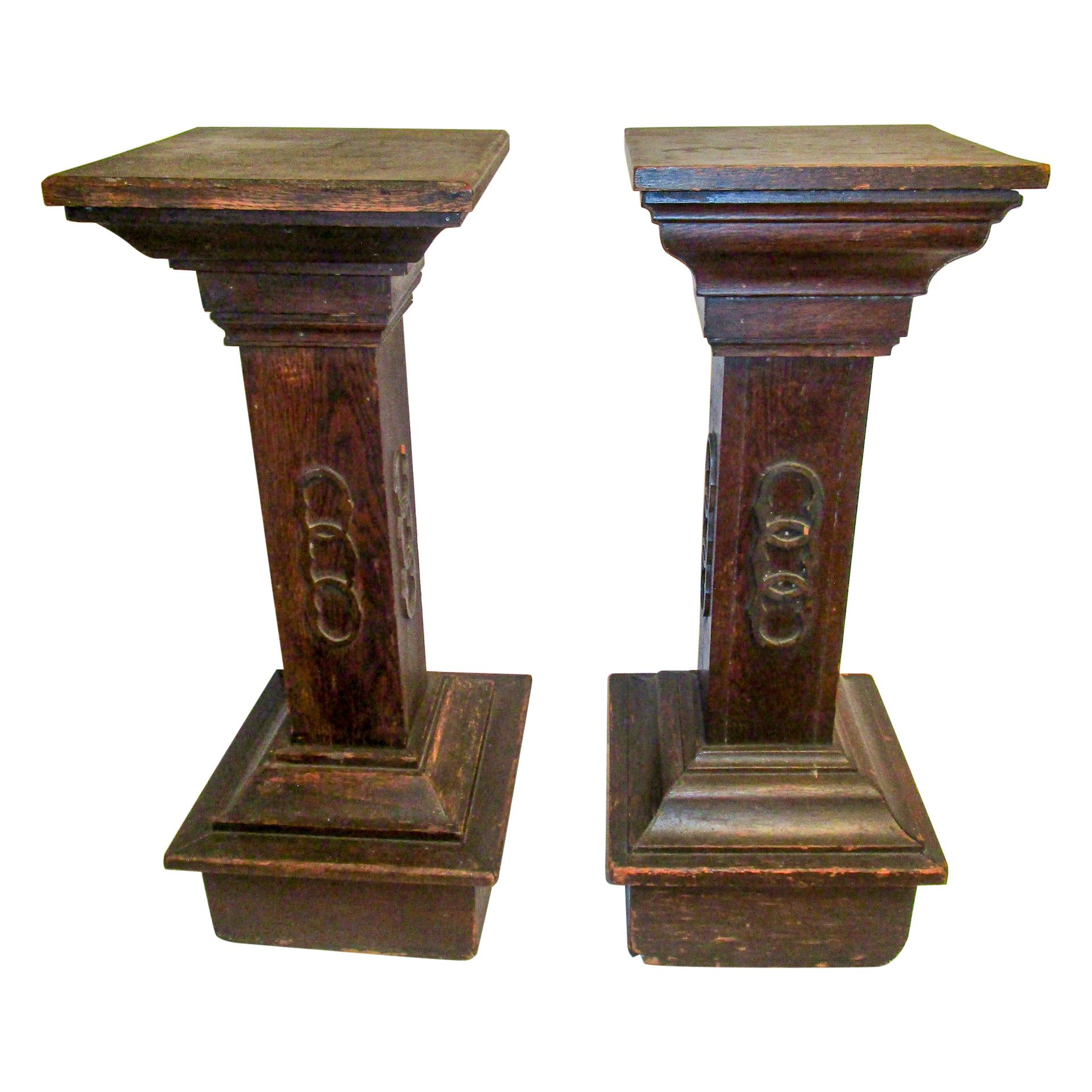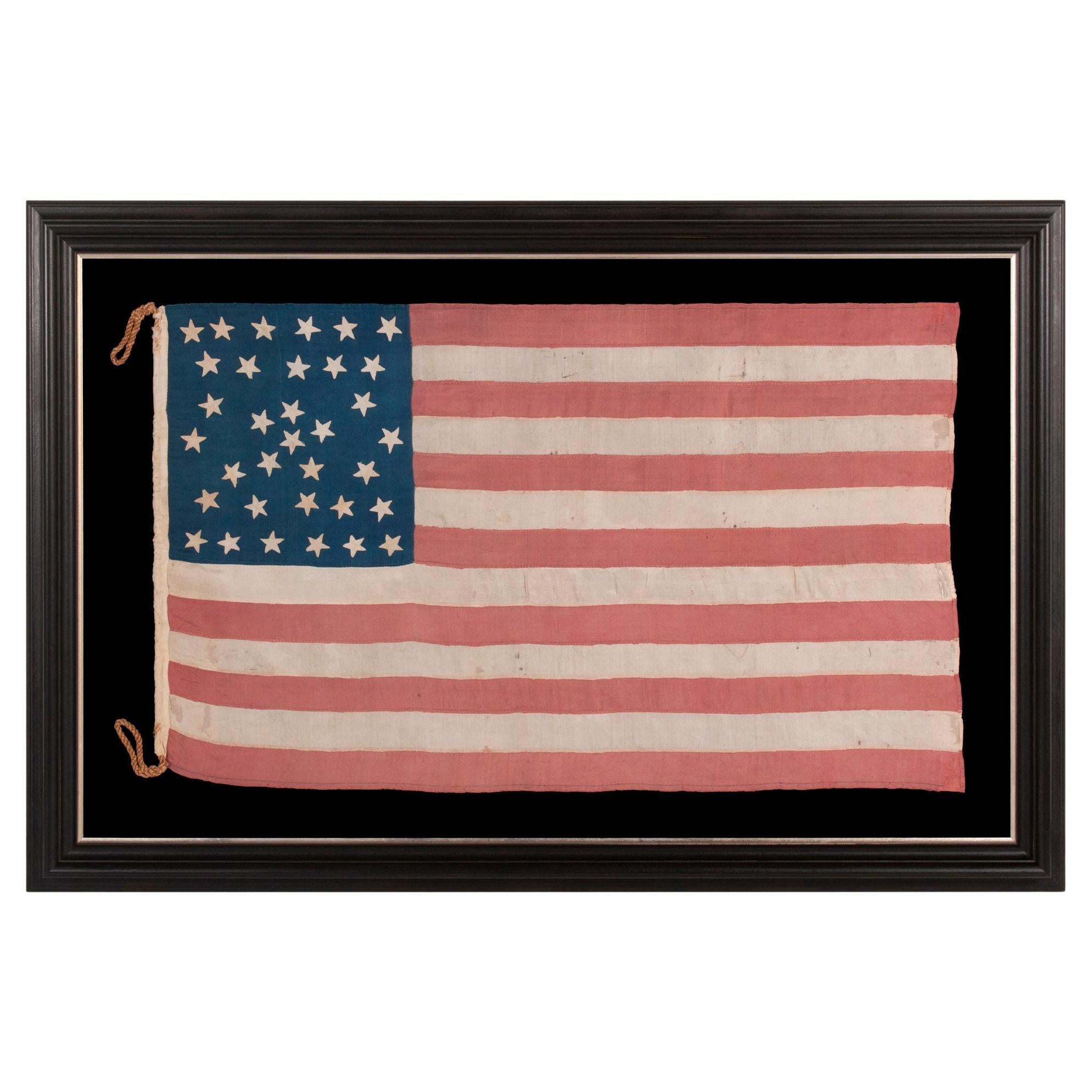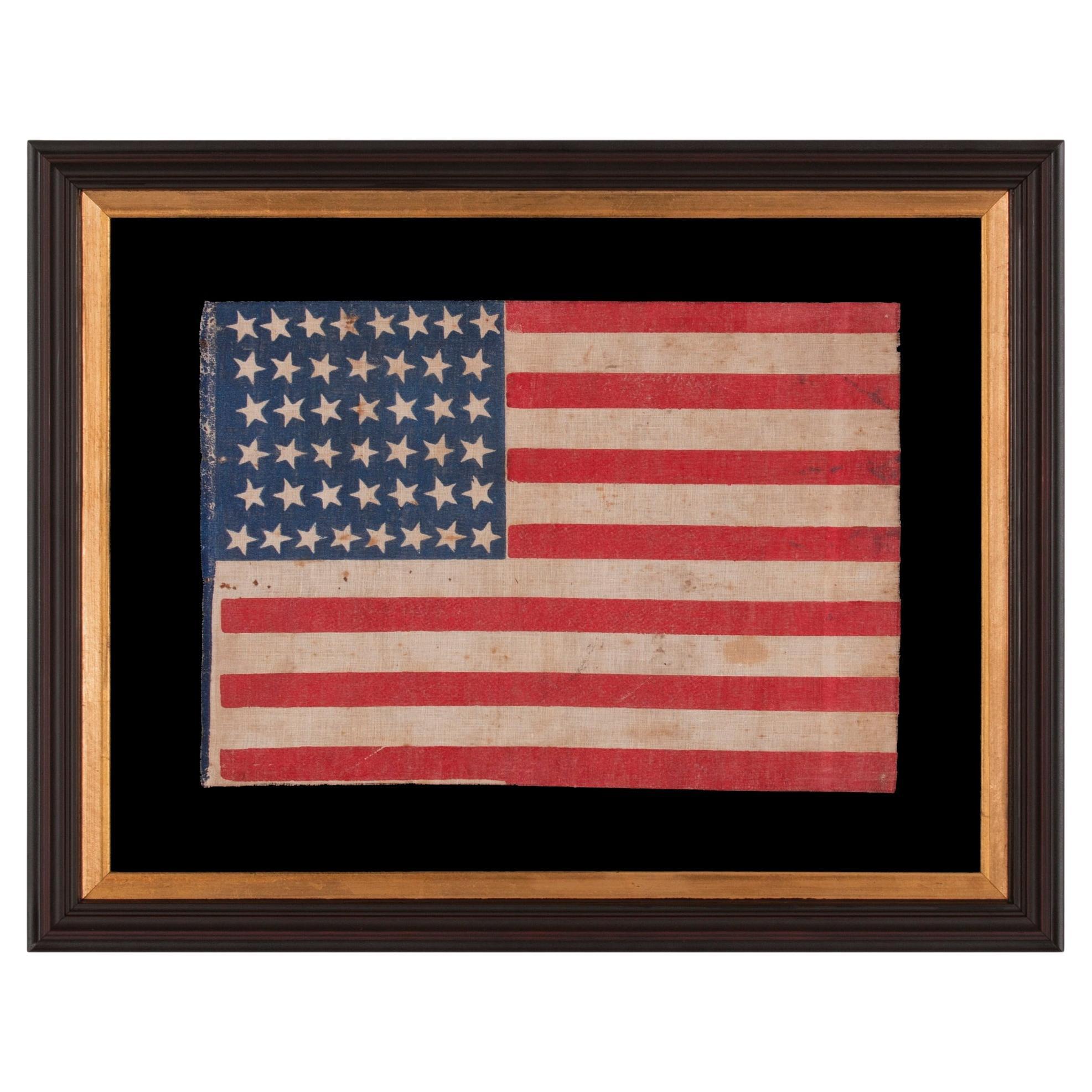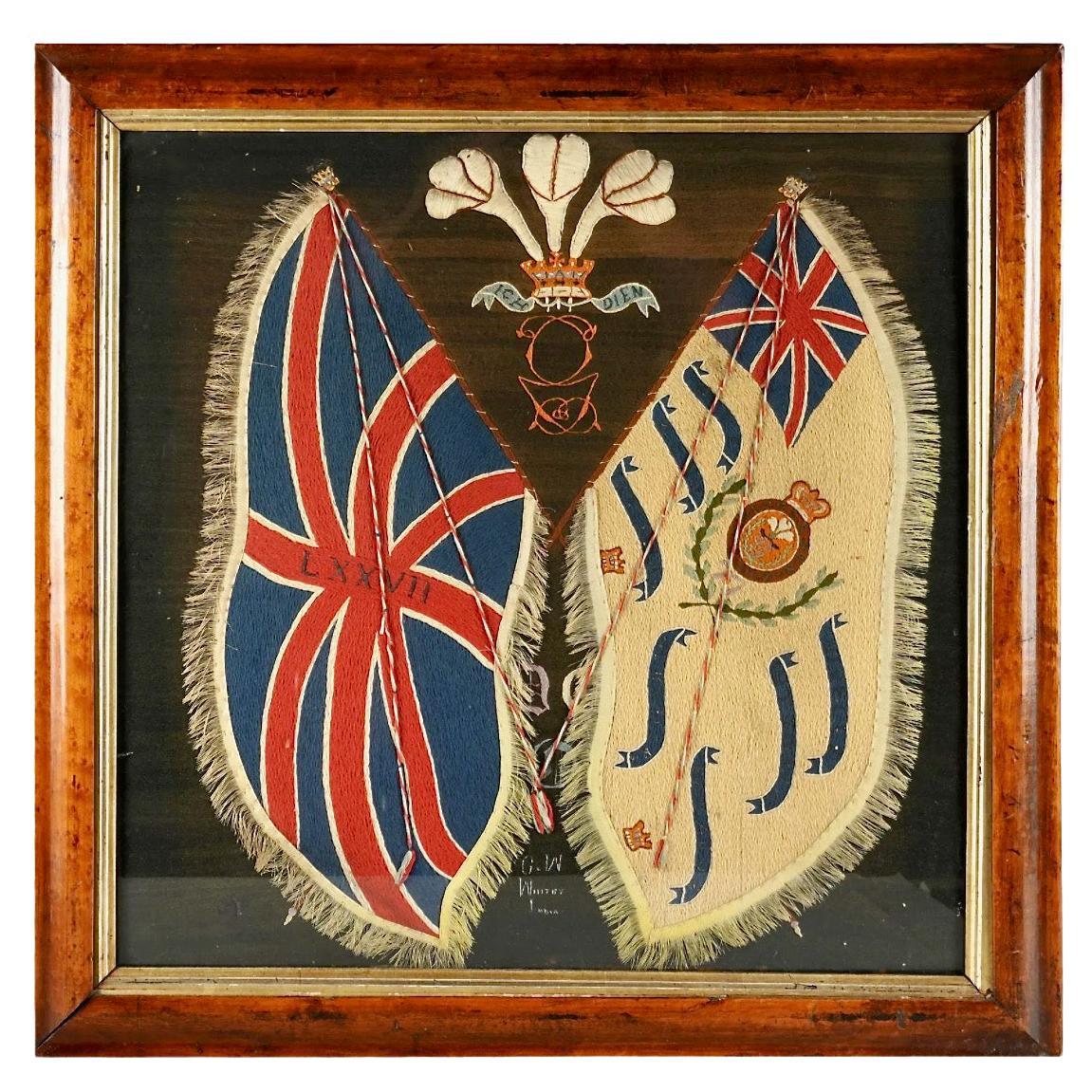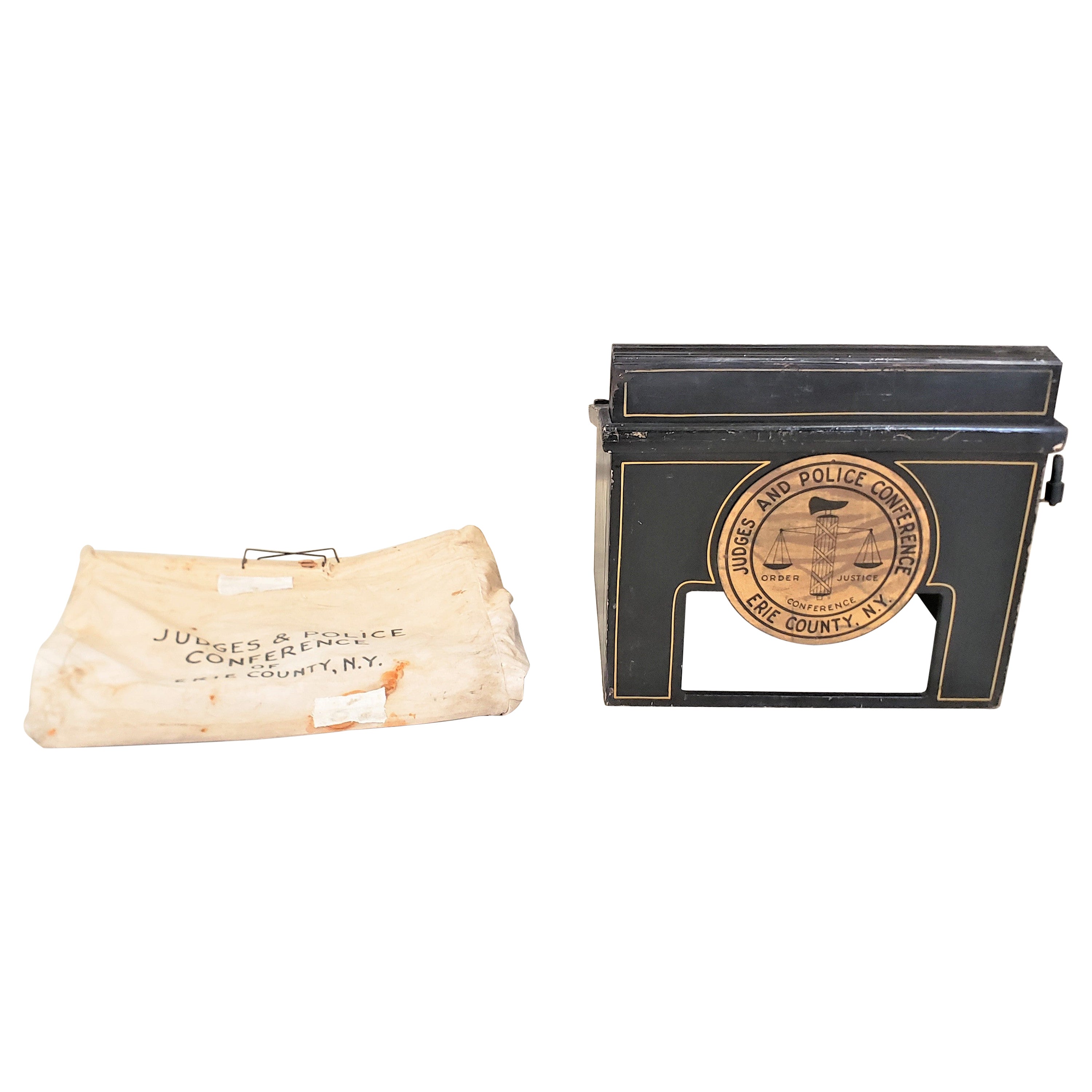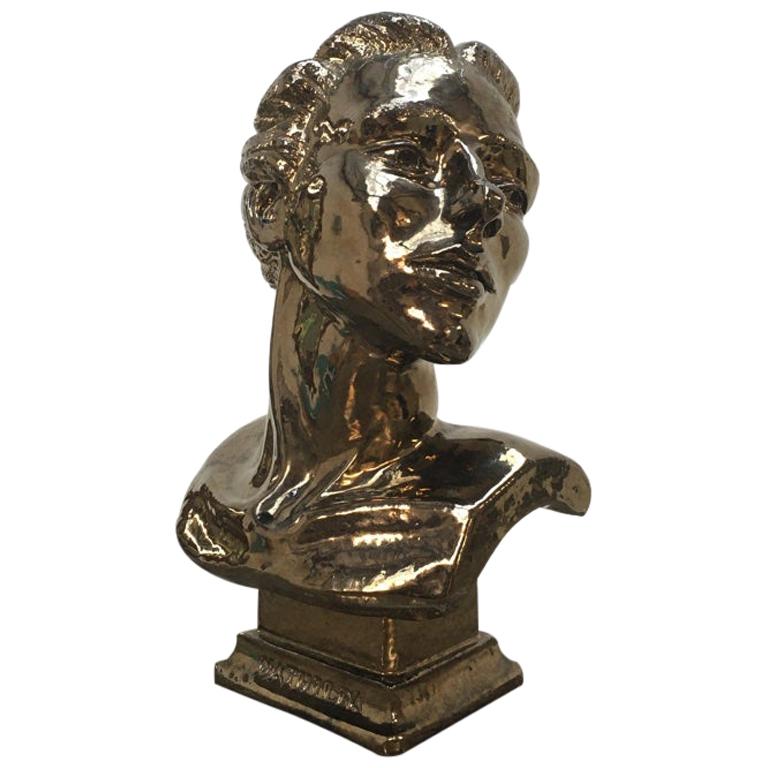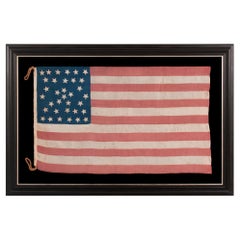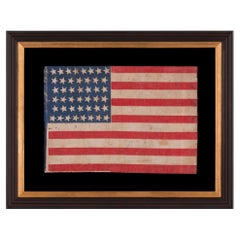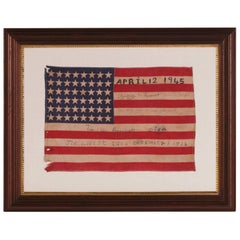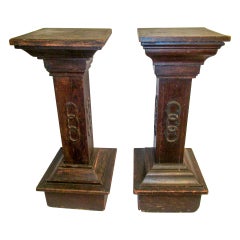
Masonic Or Odd Fellow Fraternal Regalia Hourglass
View Similar Items
Want more images or videos?
Request additional images or videos from the seller
1 of 6
Masonic Or Odd Fellow Fraternal Regalia Hourglass
About the Item
Wooden fraternal hourglass, found in the Pittsburgh area. This was part of either Masonic or Odd Fellows ceremonial, fraternal regalia. The turnings are exceptional; note the exaggerated, bulbous form with tiny waist and fine pillars. Made circa 1880-90. The silver and gold paint have great patina. Condition: Expected wear.
- Dimensions:Height: 13.5 in (34.29 cm)Width: 6.75 in (17.15 cm)Depth: 7 in (17.78 cm)
- Place of Origin:
- Period:
- Date of Manufacture:1880-1890
- Condition:See Item Description.
- Seller Location:York County, PA
- Reference Number:Seller: fcs-1421stDibs: U1103218497363
About the Seller
5.0
Recognized Seller
These prestigious sellers are industry leaders and represent the highest echelon for item quality and design.
Established in 1991
1stDibs seller since 2008
61 sales on 1stDibs
Typical response time: 10 hours
More From This SellerView All
- 34 Star Antique American Flag with Hourglass Medallion Stars, ca 1861-1863Located in York County, PAEXTRAORDINARY 34 STAR ANTIQUE AMERICAN FLAG WITH AN ACCORDION OR HOURGLASS MEDALLION CONFIGURATION THAT SURROUNDS A PENTAGON OF STARS IN THE CENTER; MADE OF FINE SILK AND ENTIRELY HAND-SEWN; MADE DURING THE OPENING YEARS OF THE CIVIL WAR (1861-63), IN A TINY SIZE AMONG ITS COUNTERPARTS OF THE PERIOD; REFLECTS THE ADDITION OF KANSAS AS THE 34TH STATE 34 star flag of the Civil War period with an array of rare, beautiful, and otherwise desirable features. Extremely small among flags of this period with pieced and sewn construction, the flag displays a star pattern that is not only highly unusual, but unique to this particular example. This consists of a single star in the very center, surrounded by a pentagon of stars, flanked by angular bracket of three stars to either side. Above and below are rows of 5 stars, followed by rows of 6 that line the top and bottom of the canton. The resulting configuration is what I have termed an “accordion medallion,” though “hourglass medallion” or “standing bow tie” would be perfectly acceptable. When rotated 90 degrees, to view the harder-to-identify, bow tie formation, students of early star patterns may note the visual similarity between this and what I call “Starburst” or “Crosshatch” medallions. The pattern, however, conspicuously lacks the crosses of St. Andrew (a saltire) and St. George (roman cross), that would allow it to be more accurately categorized as such. Entirely hand-sewn, the canton and stripes of the flag are made of fine silk. The hemming of this was accomplished with great skill. The top and bottom edges are selvedge. These are so similar in nature as to have come from the same maker. There is a white, silk binding along the hoist, in the form of an open sleeve, through which a length of braided hemp rope was passed, expertly looped and re-braided into itself at the top and bottom for strength. The stars are made of white, polished cotton. These were stitched to both sides (double-appliqued). Note how the edges of the fabric were not turned under, providing evidence of the fact that the maker was not especially skilled in appliqueing. This was common, as applique work was far more difficult than producing French seams. In the 19th century, most flags with pieced and sewn construction were 8 feet long and larger. A six-footer was considered small. Even military battle flags, carried on foot, measured 6’ x 6.5’, which translates into approximately 7’ x 7.5’ after framing, about the size of an average quilt and larger than can comfortably fit on a wall in a house with 8-foot ceilings and average width baseboard. Flags smaller than this were produced both commercially and at home, but the smaller they are, the more unusual they are. At just 26.5 x 46.5 inches, this flag is extremely small for a Civil war period flag with sewn construction. Silk was both beautiful and lightweight, which made it elegant for military unit colors and preferable for flags meant to be carried on foot. Most outdoor use flags...Category
Antique 1860s American Political and Patriotic Memorabilia
MaterialsSilk
- 44 Star Antique Parade Flag, Hourglass Formation, Wyoming Statehood ca 1890-1896Located in York County, PA44 STAR ANTIQUE AMERICAN FLAG WITH AN HOURGLASS FORMATION ON A BRILLIANT BLUE CANTON; REFLECTS THE ERA WHEN WYOMING WAS THE MOST RECENT STATE TO JOIN THE UNION, 1890-1896 44 star Am...Category
Antique Late 19th Century American Political and Patriotic Memorabilia
MaterialsCotton
- Antique American Flag w/ Hand-Written Inscriptions Mourning the Death of FDRLocated in York County, PA48 STARS ON ANTIQUE AMERICAN FLAG WITH HAND-WRITTEN INSCRIPTIONS AND AN EMBROIDERED DATE OF APRIL 12TH, 1945, MOURNING THE DEATH OF PRESIDENT FRANKLIN DELANO ROOSEVELT: American national parade flag with 48 stars, printed on cotton, embellished with hand-written inscriptions and an embroidered date to commemorate the death of FDR on April 12th, 1945. “On this day in 1945, President Franklin D. Roosevelt died of a massive cerebral hemorrhage at his Warm Springs, Georgia, retreat at the age of 63. Roosevelt’s death in the final months of World War II was met with shock and grief throughout the Western world. Many Americans had no inkling of his decline in health. [He] had been president for more than 12 years, longer than any other person. He led the country through some of its greatest domestic and foreign crises to the impending defeat of Nazi Germany and within sight of Japan’s surrender...Category
Vintage 1940s American Political and Patriotic Memorabilia
MaterialsCotton
- 1912 Roosevelt Turkey Red Bandana, ca 1912Located in York County, PATurkey red bandanna, made for the 1912 presidential campaign of teddy Roosevelt, when he ran on the independent, progressive party (bull moose) ticket Printed cotton kerchief, made for the 1912 presidential campaign of Theodore Roosevelt when he ran on the Progressive Party ticket (a.k.a., the Bull Moose campaign). This graphic textile, in a classic, western style, typical of the iconic red bandanna, is indicative of both the Republican Party in the late 19th century, and T.R.’s love of the American West. In this example, a geometric design with diamonds, surrounded by multiple, linear borders, is accompanied by the following text along the top and bottom that reads: “The Roosevelt Bandanna” and “Progressive Party,” respectively. A maker’s mark in the lower right corner reads “Cochranes Mfg. Co.” Cochrane’s was known for their long-lasting, red dye process, called “Cochrane’s Turkey Red.”. It was really a process, as opposed to a dye itself, to which the name applied. The dye was actually a derived from a synthetic colorant called “alizarin,” imported by Alexander Cochrane’s family, who emigrated to the United States from 1847, and owned a chemical company in Massachusetts that produced the dye. The fabrics were produced by the family of John Cochrane, who emigrated from Renfrewshire, Scotland in 1844. Both families, who resided in Malden, Massachusetts initially, traced their ancestry to Barrhead, Scotland, in the heart of the textile-producing region, near Glasgow and Paisley. It was in Glascow that Turkey Red printed bandannas are said to have originated, in the shop of Henry Monteith & Company, in 1802.* TR's decision to enter the 1912 election was not exactly popular among many of his friends and former supporters. His participation manifested into a unique political incident, in which the independent, Roosevelt, beat out a major party ticket, garnering 27.4% of the vote. At the same time, however, he lost the White House, not only for himself, but for his former Republican friends as well, by dividing support between his own candidacy and that of incumbent President William Howard Taft...Category
Vintage 1910s American Political and Patriotic Memorabilia
MaterialsCotton
- Cast Iron Boot Jack Made for 1864 Presidential Campaign of George McClellanLocated in York County, PACAST IRON BOOT JACK, MADE FOR THE 1864 PRESIDENTIAL CAMPAIGN OF GENERAL GEORGE B. MC CLELLAN, WITH A FANTASTIC SLOGAN THAT READS "THE UNION AT ALL HAZZARDS" Made for the 1864 presidential run of George B. McClellan, this cast iron bootjack is both rare and graphically exceptional. Displaying the original black-painted surface, with attractive and desirable patina, the stylized profile has a wonderful folk art quality. Molded block letters that wrap around the heel clasp read simply "Gen. Mc Clellan. These are accompanied by a prominent Civil War-associated slogan: "The Union at all Hazards." The text is intermingled with 34 stars, which was equivalent to the number of states during the opening two years of the war, but was one star short by mid-1863 and two stars short by the time of the actual election in 1864. It's not unusual to encounter this feature in civil war campaign parade flags as well as all manner of flag-related ephemera. The iron was reportedly cast by G. & D. Cross of Morrisville, New York, though it is unsigned and I have not yet verified the attribution. I have seen two other examples, one of which had a broken and repaired tine on the U-shaped horns and newly painted surface, while the other appeared to have broken lifters and inferior, rusted patina. This is, hands-down, the best of the identified examples. Brief History of the 1864 Campaign: President Abraham Lincoln had a checkered relationship with his 1864 opponent, who he had formerly chosen as General-in-Chief of the entire Union Army. The career officer repeatedly knocked heads with his Commander-in-Chief. Having raised a well-trained and organized military force, McClellan often seemed reluctant to use it. By 1862, after losses in Virginia during the Peninsula Campaign, Lincoln grew frustrated with McClellan and the progression of the war and removed him from command. By the early part of 1864 the American people shared some of the same frustrations and Lincoln was no longer the clear choice for the White House. The nation was tired of war and the remains of the Democratic Party...Category
Antique 1860s American Political and Patriotic Memorabilia
MaterialsIron
- 38 Star Antique American Flag by Horstman Brothers, Colorado Statehood, ca 1876Located in York County, PA38 CANTED STARS IN STAGGERED ROWS, ON A CLAMP-DYED, WOOL, ANTIQUE AMERICAN FLAG MADE BY THE HORSTMANN BROTHERS IN PHILADELPHIA, ALMOST CERTAINLY FOR DISPLAY AT THE 1876 CENTENNIAL EXPOSITION; A VERY RARE EXAMPLE WITH STRONG COLORS AND GREAT TEXTURE; REFLECTS COLORADO STATEHOOD 38 star American flag, press-dyed on wool bunting, with wonderful texture and great colors. Made by Horstmann Brothers of Philadelphia, a major military outfitter, the flag is signed along the hoist with a black stencil. The stars of the flag are arranged in lineal rows of 8-7-8-7-8. Note how these are universally canted, with one point directed at roughly 11:00, when the flag is viewed on the obverse (front). This particular style of flag, from Horstmann, is exceedingly rare. Measuring approximately two by three feet, I know of just four examples in total, including this flag, all of which I have had the great privilege to own. The first two I acquired about 20 years ago. I was not yet taking digital imagery at the time, and cannot seem to locate them among my files of hard copy prints and negatives. I believe they displayed in the same configuration of staggered rows. The example that I owned more recently bore the staggered row layout, but had exceedingly crude printing, whimsical and interesting in its own right. All, I believe, have displayed their stars slightly canted at an angle, like the flag that is the subject of this narrative. A close variation that I acquired about 11 or 12 years ago also had canted stars. It was in the same scale and shared the same 8-7-8-7-8 distribution, but the rows were not staggered. Instead these were justified toward the fly end. Because the spacing was inconsistent, the resulting formation was not what one might expect, with perfect spaces for two additional stars along the hoist end (a “notched” pattern). Horstman flags made of press-dyed wool sometimes had formal bindings, sometimes had a length of fabric tape stitched along the hoist, and sometimes had no binding at all. This one has a traditional binding, made of heavy cotton twill, in the form of an open sleeve, treadle-sewn along the hoist. Near the top of this, “2 x 3 Ft.” appears in a black inked stencil, near the top, accompanied by “Horstmann. Phila.” Near the bottom. Colorado became the 38th state on August 1st, 1876. This was the year of our nation’s 100-year anniversary of independence. Per the Third Flag Act of 1818, stars were not officially added until the 4th of July following a state's addition. For this reason, 37 was the official star count for the American flag in 1876. Flag-making was a competitive venture, however, and few flag-makers would have continued to produce 37 star flags when their competitors were making 38’s. It is for this reason that 38 and 13 stars (to represent the original 13 colonies) are more often seen at the Centennial Expo. Some flag-makers would have been adding a star for the 38th state even before it entered the Union, in the early part of 1876 or even prior. In fact, many makers of parade flags were actually producing 39 star flags, in hopeful anticipation of the addition of two more Western Territories instead of one. But the 39th state would not join the Union for another 13 years, when the Dakota Territory entered as two states on the same day. The 38 star flag became official on July 4th, 1877 and was generally used until the addition of the Dakotas in 1889. Press-dyed wool flags are scarcer than those printed on cotton and silk. Because parade flags were often intended for one day's use at a parade, political rally, a reunion of soldiers, or some other patriotic event, most were made of cotton. While cotton absorbs water, short-term use precluded the need for anything more hardy. Because the Centennial Exposition lasted for a period of six months, it required decorative flags that would sustain being flown for a longer time and withstand the elements. It is reasonable to assume that press-dyed wool flags were adapted for precisely this purpose, because wool sheds water is suitable for extended outdoor use. Previous to this time they primarily saw military function. A Brief History of the Horstmann Company: William H. Horstmann (1785-1850) was the founder of what would become a major military outfitter in both Philadelphia and New York City. A solider and fourth generation passementier (textile weaver), he emigrated to the United States from Germany in 1816 and settled in the Germantown area of Philadelphia, where there was a significant concentration of textile manufacture. There he married the daughter of the most successful lace manufacturing firm, and started his own business in coach lace and military goods at the corner of 59 North 3rd Street. He imported looms from Germany and elsewhere and maintained a regular trade with his family in Europe. The company grew exponentially in size and had many addresses over its years of operation. In 1828, the William H. Horstmann Military Store opened. In 1843 it became William H. Horstmann & Sons Military Store, and in 1859 it was taken over by sons, Sigmund H. and William J., and began to operate as Horstmann Bros. & Co. The company manufactured its own goods, including flags, swords, drums, insignia, and many other items, and it subcontracted their manufacture as well, depending on financial sensibility. There were investors along the way, such as William S. Hassall and George Evans, who broke off and began their own large and successful firm. The New York branch changed its name in 1877 to that of a Horstmann partner, H.V. Allien. Both Philadelphia and New York branches filed for bankruptcy and closed in 1948. Because of its Philadelphia location, Horstmann was in a unique position to supply flags and banners to the 1876 Centennial International Exposition, and thus served an integral role in decorating the enormous, six-month long event. It is logical to presume that this extremely interesting and rare flag...Category
Antique 1870s American Political and Patriotic Memorabilia
MaterialsCotton
You May Also Like
- Odd Fellows Wooden Pedestal Pair 19th cLocated in Savannah, GAVery sturdy 19th century wooden Odd Fellows Lodge pedestals in all original condition. Quite rare to find the three rings attached separately, this pair is handmade with the three links in gilded wood. Great stands for Folk Art displays. Square tops measure 12 inches across, bases measure 13.50 inches. I. O. O. F. (International Order of Odd Fellows)Category
Antique 1890s American Folk Art Political and Patriotic Memorabilia
MaterialsWood
$650 Sale Price / set49% Off - 19th c Wooden Ceremonial Fraternal Masonic Crook and Metal Spear on Metal BasesLocated in Savannah, GALarge size gold gilt wooden ceremonial fraternal Masonic Crook perched on a long painted wooden pole. Supported by a decorative three-footed metal base, the gilt wood crook itself me...Category
Antique 1890s American Folk Art Historical Memorabilia
MaterialsMetal
$595 Sale Price / item68% Off - AL Malaikah Vintage Iconic Masonic Shriner Burgundy Wool Fez HatLocated in North Hollywood, CAAL Malaikah vintage Masonic Shriner iconic burgundy wool Fez hat. Al Malaikah, legion of Honor vintage fez hat from the Los Angeles Al Malaikah Shrine...Category
Late 20th Century American Moorish Political and Patriotic Memorabilia
MaterialsWool
- AL Malaikah Vintage Iconic Masonic Shriner Burgundy Wool Fez Hat in Original BoxLocated in North Hollywood, CAAL Malaikah vintage Masonic Shriner iconic burgundy wool Fez hat with original box. Al Malaikah, legion of Honor vintage fez hat from the Los Angeles ...Category
Vintage 1970s American Moorish Political and Patriotic Memorabilia
MaterialsWool
- 19th Century Masonic Table with Leather Bible Compartment Flip Lid Compass LegsLocated in Port Jervis, NYRare and fabulous 19th century faux book with compass legs as legs. Mustard paint on the legs with Gilt on the pages of the leather bound book. Looks to be original tassle.. Possibly...Category
Antique 1860s American Folk Art Political and Patriotic Memorabilia
MaterialsLeather, Hardwood, Paint
$3,880 Sale Price20% Off - American Odd Fellows Lodge Black Wood Counter Folk Art Grain Painted HourglassLocated in Santa Monica, CAGreat 19th century American folk art counter with original grain painted surface. Fantastic Hourflassl painted design. Open back. Very solid and sturdy counter. Please note the red c...Category
Antique Late 19th Century American Folk Art Painted Furniture
MaterialsWood
